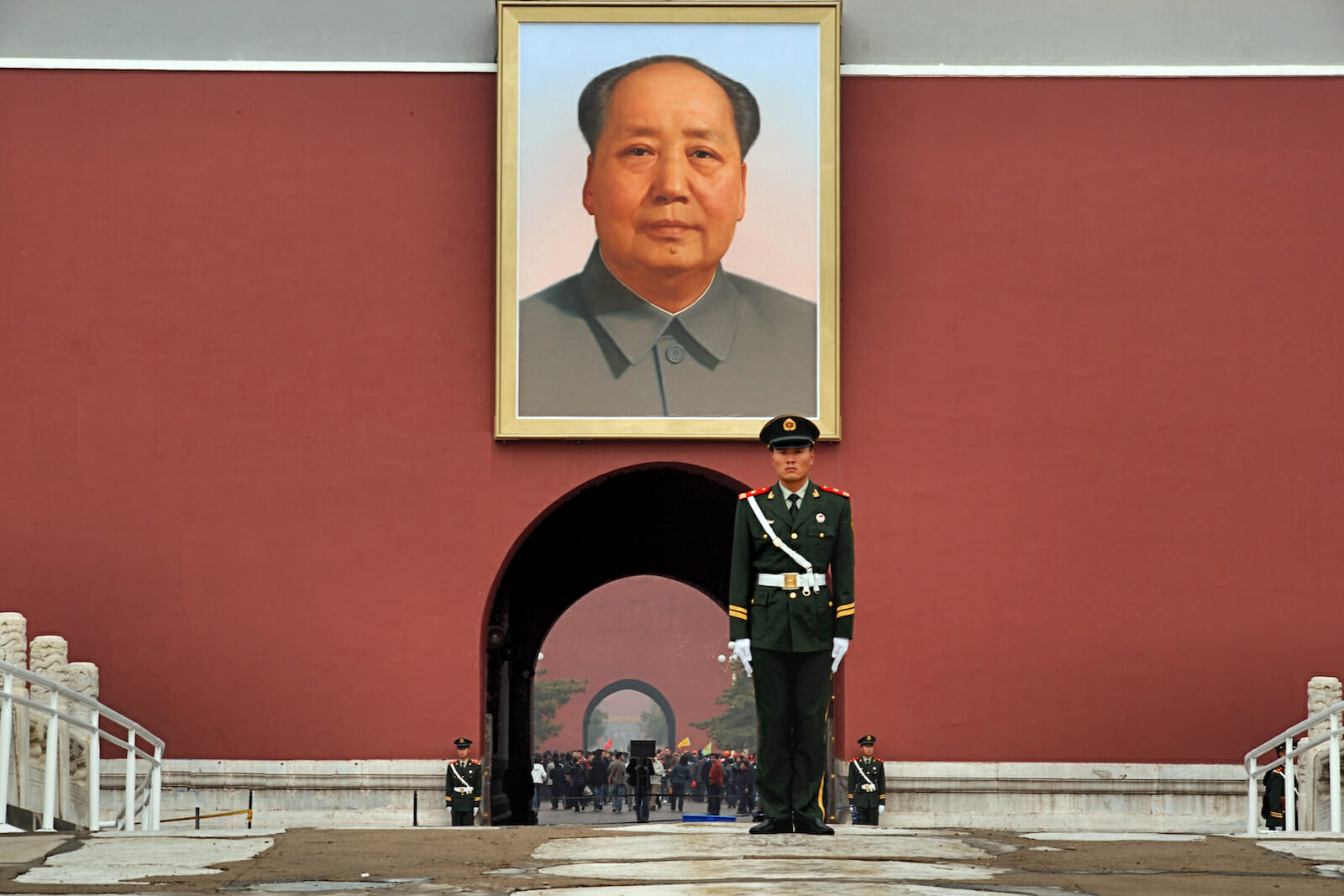
China’s COVID-19 Propaganda Playbook: Part 1
“Propaganda is the deliberate, systematic attempt to shape perceptions, manipulate cognitions, and direct behavior to achieve a response that furthers the desired intent of the propagandist,” according to Garth Jowett and Victoria O’Donnell in Propaganda and Persuasion. Propaganda is foundational in the Chinese Communist Party (CCP), and under General Secretary Xi Jinping, the CCP wields a global propaganda machine that includes Party media and official government ministries. In the early weeks of the COVID-19 outbreak, the propaganda playbook of the CCP and the Chinese Ministry of Foreign Affairs (MFA) touted transparency, claimed control, and opposed overseas overreaction.
CCP Propaganda History
Propaganda engenders visions of patriotic posters and jingoistic phrases, but effective propaganda combines government resources (i.e. official ministry statements) and non-government sources (i.e. news articles). Since contemporary China’s 1949 founding, the CCP has exploited propaganda by controlling government, communication mediums (print, radio, television, and the Internet), and corresponding media (newspapers, books, radio stations, TV channels, social media, smartphone apps, etc.). From Mao Zedong’s Little Red Book to smartphone apps featuring Xi’s speeches, propaganda is critical to China and the CCP.
Propaganda under Xi: Party-State Fusion
The Party employs vast propaganda outlets. Headed by Huang Kunming 黄坤明, Xi Jinping’s confidant and Central Politburo member, the CCP Publicity Department (also known as Propaganda Department) rules Party and state media including China Global Television Network, China News Service, China Radio International, Global Times, People’s Daily, and Xinhua News Agency. Historically, the CCP orchestrated Party media and only influenced MFA messaging, leaving daily MFA comments to bureaucrats. But under Xi, the CCP commands both Party media and MFA remarks.
On the Intelligence Matters podcast, Chris Johnson, China expert, and former CIA analyst, said, “The Chinese propaganda organs…now, increasingly are the voice of how China responds to international concerns, international criticism…The Foreign Ministry, they’re just kind of reading off a sheet that the Propaganda Department gives them.” Previously, diplomats—not the Party—dictated MFA statements, but today, the CCP dictates MFA messaging.
Propaganda under Xi: International Focus
CCP propaganda is usually domestic-focused, but Xi’s propaganda efforts are progressively international. Endeavors include sending CCP-mouthpiece China Daily newspapers to U.S. congressional offices; publishing pro-Beijing articles in Germany via Xinhua-connected Nihao Deutschland; and dominating African television with state-connected StarTimes.

Additionally, the CCP has aimed to shape foreign perceptions of current events. Appearing in the Daily Telegraph, Sydney Morning Herald, Wall Street Journal, Washington Post, and New York Times, China Daily supplements called China Watch deride Hong Kong protesters and justify the CCP’s internment of one million Uyghur Muslims. Notably, weeks before the 2018 U.S. midterm elections, a China Watch insert lambasting the U.S.-China trade war and U.S. President Donald Trump appeared in battleground-state Iowa’s Des Moines Register.
The CCP has also adopted Twitter—which is blocked in China—and created active CCP media, MFA, and “thousands of fake and hijacked” Twitter accounts. Recently, CCP propaganda has focused on influencing and manipulating COVID-19 dialogue.
Propaganda Purpose: Stable, Responsible Global Actor
From the Tiananmen Square Massacre to the 2003 SARS outbreak, the CCP has attempted to quell negative Party news and promote positive Party information. And its COVID-19 propaganda is the same.
The CCP’s initial propaganda response occurred from late January 2020 to late February 2020 as COVID-19 consumed China but spared most other countries. The CCP sought to promote China as a stable, responsible global actor amidst ratcheting worldwide concern; consequently, CCP propaganda touted transparency, claimed control, and opposed overseas overreaction.
Tout Timely Transparency. CCP propaganda reiterated timely transparency when describing China’s inceptive pandemic response. For example, a China Daily editorial said, “Chinese authorities have demonstrated impressive transparency, responsiveness, efficiency and capability in dealing with the public health emergency.”
Analogously, the MFA said, “Acting with openness, transparency and a high sense of responsibility towards global health security, Chinese authorities shared information of the epidemic with the WHO, relevant nations and China’s Hong Kong, Macao, and Taiwan regions in a timely manner.”
Despite local Party cadre muzzling, reprimanding, and disappearing whistleblower doctors—one who later died from COVID-19—ordering the destruction of COVID-19 samples, and lying to the World Health Organization by advising there was “no clear evidence of human-to-human transmission,” CCP propaganda proclaimed China’s response as timely and transparent.
Claim Control. Corresponding with its transparency message, CCP propaganda claimed that China had controlled the outbreak. In an editorial entitled “China highly responsible in curbing virus spread,” Xinhua wrote, “Well-rounded monitoring and quarantine systems have been adopted.”
Likewise, the MFA said, “Since the outbreak, China has taken proactive measures to handle it in a serious and professional manner. We have worked to formulate strict prevention and control schemes.”
Nonetheless, just days before, Wuhan officials held a weeklong CCP conclave, promoted shopping fairs, hosted a Lunar New Year potluck attended by 40,000 families, and allowed five million people to leave Wuhan, seeding COVID-19 throughout China and the world. (On April 16, 2020, there are nearly 140,000 deaths and 2 million cases in 210 countries, according to Johns Hopkins University.) Still, CCP propaganda portrayed China’s early pandemic control measures as effective and responsible.
Oppose Overseas Overreaction. While various nations instituted evacuations, border closures, and travel advisories for China, CCP media like Xinhua and China Daily advocated against “panic” and “overreaction.” The China Daily wrote, “Some countries have overreacted by excluding tourists from China.”
Correspondingly, China’s UN envoy and various ambassadors warned against overreaction, and the MFA singled out the U.S. response: “The U.S. helping China in fighting #nCoV? Seriously? The U.S. was the first to evacuate the consulate from Wuhan, withdraw some embassy staff, and impose a travel ban on all visitors from China. Overreaction only helps spread panic.”
Even as Wuhan officials welded residents into their apartments to prevent disease spread, CCP propaganda declared overseas responses like border closures an “overreaction.” Ironically, China closed its borders to foreign nationals and limited the number of inbound international flights and passengers in late March 2020.
The Pen
As COVID-19 engulfed China from January 2020 through February 2020, the CCP dispelled the Party’s duplicitous pandemic response and touted timely transparency, claimed control, and opposed overseas overreaction. Championing China as a stable, responsible global actor was the chief CCP messaging goal.
Since late February 2020, however, CCP propaganda has glorified its own pandemic response and condemned the U.S. pandemic response and rhetoric. Looking forward, post-pandemic CCP propaganda will maintain its traditional objective: promote and protect the Party—even if it lies, obfuscates, and disappears whistleblowers.
“Mao Zedong said that to have the power you need two things: the gun and the pen,” said Guo Liang, member of the Chinese Academy of Social Sciences, in a Committee to Protect Journalists interview. But while Mao wielded the Party pen to rewrite and cross-out history domestically, Xi is wielding the Party and state pen to rewrite and cross-out history internationally.

